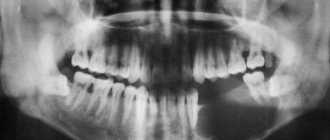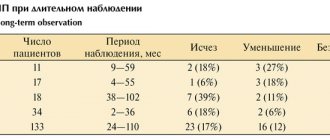Periostitis is an inflammation of the periosteum, which most often develops as a result of other diseases. Typically, the inflammatory process begins in one layer of the periosteum, and as the disease progresses, it spreads to the rest. The bone and periosteum are closely connected to each other, so there is a possibility of developing a complication in the form of osteoperiostitis - the spread of inflammation, including to bone tissue.
Uncomplicated forms of periostitis are treated by dentists. In addition to treating this disease, it is important to pay attention to the treatment of the underlying pathology that caused the inflammation.
Causes of pathology
If the lymph node in the neck under the jaw is inflamed, then the possible causes are:
- diseases of infectious origin that affect the ENT organs and the upper parts of the respiratory system (tonsillitis, sinusitis, tonsillitis, laryngitis, pharyngitis, otitis media);
- diseases developing in the oral cavity (caries, periodontal disease, periodontitis, periostitis, or gumboil, pulpitis, gingivitis, alveolitis, stomatitis);
- systemic infections (measles, whooping cough, mumps, popularly called mumps, chicken pox);
- pathologies affecting the immune system (lymphomas, leukemia, lupus, HIV);
- neoplasms (benign or malignant) of various origins (atheromas, granulomas, lipomas, cysts);
- infections caused by parasitic microflora (lymphoreticulosis, toxoplasmosis);
- disruptions in the functioning of the immune system.
You should know that the above ailments are not always accompanied by inflammation of the lymph nodes. Quite often, the nodes remain in a normal state even if the disease is acute.
If the lymph node under the jaw is inflamed, then in 60% of cases the pathology is caused by dental problems, in 30% by diseases of the respiratory system. In 20% of cases, the reason why the lymph node under the jaw is inflamed and hurts is advanced caries, leading to the development of a purulent abscess. After tooth extraction or conservative treatment of caries, pathological processes in the lymph nodes stop.
But sometimes it is tooth extraction that can become a provoking factor and cause an enlarged lymph node. A similar situation is possible if an infection enters the hole.
Diagnostics
Therapists are involved in determining the cause of neck swelling. According to indications, patients are referred to otolaryngologists, endocrinologists, maxillofacial surgeons, and other specialists. The examination includes objective, instrumental, and laboratory techniques. The following diagnostic procedures are carried out:
- Questioning, general examination
. A basic study that allows you to establish a preliminary diagnosis and draw up a plan for further examination. Involves studying symptoms, medical history, and assessing external changes. - Sonography
. Ultrasound of the neck is informative when studying the condition of organs and soft tissues, it allows you to identify tumors, areas of inflammation, determine the localization and boundaries of pathological processes. An ultrasound of the thyroid gland is prescribed if an endocrine cause of neck swelling is suspected. Ultrasound of the lymph nodes is recommended for lymphadenitis and cancerous tumors. - Radiography
. To exclude subluxations and vertebral fractures, X-rays of C1 or the cervical spine are prescribed. If there are symptoms of damage to the ENT organs, an x-ray of the larynx is performed. - Other visualization techniques
. CT and MRI of the neck are performed to detail the information obtained during sonography or radiography and make it possible to clarify the location, volume, and nature of the pathological process. - Radioisotope scintigraphy.
Effective in studying the thyroid gland, visualizes nodes, confirms the presence of diffuse changes. - Endoscopic examination of the throat.
Direct and indirect laryngoscopy, microlaryngoscopy, fibrolaryngoscopy are prescribed for lesions of the larynx. According to indications, a biopsy is performed during the study. - Lab tests
. Depending on the existing symptoms, general and biochemical blood tests, examination of the level of thyroid hormones and antibodies to them, microbiological analysis of swabs, punctures, blood samples, cytological or histological examination of a biopsy specimen can be performed.
Neck palpation
Stages of disease development and symptoms
Lymphadenitis in its development goes through 3 stages:
- stage
– the lymph nodes take on the appearance of mobile, compacted tubercles, when pressure is applied to them, pain appears, the temperature rises, sleep is disturbed, and general weakness is detected;
- stage (purulent abscess)
– the lymph node enlarges more and hurts even if you don’t touch it, which limits the motor activity of the jaw, pus accumulates in the lymph node, the skin around it becomes red, and the temperature is constantly elevated;
- stage (purulent phlegmon)
– the tumor spreads to the lymph nodes located in the armpits, the pain intensifies significantly, the skin turns blue, the temperature rises to 40⁰.
About tumors in the neck area
The neck is an important part of the human body because it connects the head to the torso. Therefore, new growths on it should at least give cause for concern.
Tumors and lumps are unnatural formations. They are divided into two types:
- benign;
- malignant.
Tumors prevent a person from living a normal life
Benign tumors do not appear for a long time and are easy to get rid of. Malignant ones, on the contrary, manifest themselves sharply, develop rapidly and over time become more difficult to get rid of.
The tumor can appear in any part of the neck.
Treatment methods
If the lymph node under the jaw is inflamed, how to treat it? The choice of treatment method is influenced by the cause of the pathology and its neglect. In mild cases, if the cause is eliminated, the inflammation will stop and the lymph node will return to its previous size. If complications are detected, the doctor will prescribe antibiotics or antiviral medications, painkillers, antipyretics and antihistamines. It is also necessary to take vitamins to strengthen the body's defenses. Traditional medicine will help speed up the healing process and eliminate unpleasant symptoms. The course of therapy takes a week and a half.
If a purulent infection occurs, then there will be a need for surgical intervention, during which the surgeon will open the inflamed lymph node and pump out the pus. Fortunately, this situation is extremely rare.
This article is for informational purposes only, please consult your doctor for details!
Symptoms
Symptoms of tumors and swellings in the neck:
- hoarseness of voice;
- swelling in the neck;
- aching pain;
- difficulty eating.
The symptoms of tumors and swellings in the neck are not very characteristic, and therefore it is not always possible to identify the disease in time
If symptoms get worse, the tumor is likely growing in size, which can be life-threatening. In this case, you must immediately undergo diagnostics and consult a specialist.
Results
Tumors and swellings in the neck area are a serious problem that can affect every person. Even though some of them are considered benign, they are still dangerous because they can turn into malignant forms over time.
There are many reasons for the appearance of tumors, but mostly it is due to bad habits and viruses. They most often contribute to the occurrence of this type of problem in people.
A tumor in the neck is a dangerous disease that must be fought to the end
It is impossible to overestimate the need for prompt diagnosis of tumors in the neck and the work of qualified specialists, since early detection of the disease provides a greater chance of a full recovery.
Treatment of early symptoms of tumors and swellings in the neck area is possible without surgery, but if you do not consult a doctor in time, surgical removal of the tumor will be the only way out for a cure.
If you do not create favorable conditions for the development of malignant neoplasms, then tumors and swellings in the neck will never bother you.
Secondary risk factors
Below are described the secondary signs that serve as the basis for the appearance of tumors and swellings.
Floor
Neck tumors are more common in men. On average, up to 80% of cases of complaints regarding this matter were made by men (according to statistics from WHO). However, the number of women suffering from neck tumors is rapidly changing, as more and more representatives of the fair sex are now abusing alcohol and cigarettes.
Males are more likely to suffer from neck tumors
The ratio of men to women affected by this pathology is 3 to 1. According to studies that have been conducted over the past five years, this imbalance will continue.
Age
Most often, people over 50 years of age suffer from tumors in the neck area, but recently young people aged 25-35 years have increasingly begun to report this complaint.
The disease is getting younger - more and more young people are suffering from this disease
In addition, young people have problems diagnosing the disease due to the too long list of possible causes that must first be “weeded out.”
Climatic conditions
It is noteworthy that the risk of developing a tumor, for example, in India, is almost six times higher than in Scandinavia.
The climatic conditions in which a person lives directly affect the chance of a tumor appearing in the neck area
According to scientists, the high incidence rate in Asia is a consequence of common habits in the area, such as chewing betel nut and using smokeless tobacco. The high increase in the incidence of this pathology in Russia is caused by smoking and alcoholism.
Prevention
To prevent the recurrence of tumors or swelling in the neck area, the following preventive measures are recommended.
- You need to say “no” to bad habits. To eliminate any favorable conditions for the development of tumors and swellings in the neck area, you need to stop drinking alcohol and smoking. The disappearance of these two bad habits from a person’s life significantly reduces the chance of cancer recurrence, which can cause a tumor.
- Get vaccinated. Today, human papillomavirus (HPV) vaccines help fight oropharyngeal and neck cancer.
- Sports activities. Everyone knows about the benefits of physical exercise for human health. Anyone who plays sports has a strong immune system and a well-developed body physically. This gives natural resistance to most diseases.
- Exposure to the sun should be done in moderation. Many people love to sunbathe, but not everyone benefits from the sun equally. After treatment for a tumor, it is better to be less exposed to direct sunlight and tightly cover the places where the tumor was once located. This will avoid a possible relapse.









